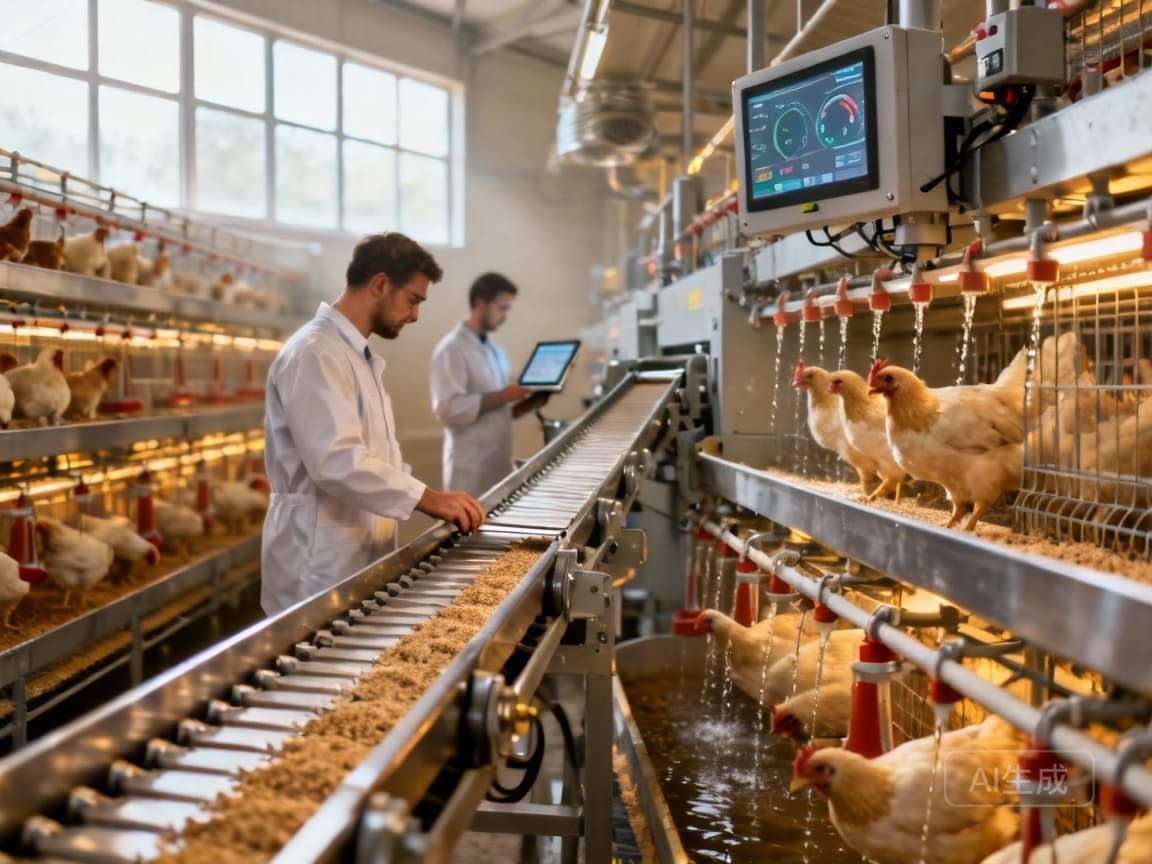Automated Poultry ROI: Achieve 48% Market Share & 6.3% CAGR with Strategic Investment #51
Automation dominates 48% of poultry equipment market with 6.3% CAGR. Strategic investment in automated feeding/watering systems drives ROI as market expands from $4.5B to $7.1B by 2034.

Beyond Efficiency: The Strategic Financial Framework for Automated Poultry Equipment Investment Decisions
The poultry farming equipment market is undergoing a fundamental transformation, with automation projected to capture 48.0% of market revenue share in 2025 and growing at a 6.3% CAGR. While many suppliers focus on efficiency gains, strategic investors recognize that automation represents more than operational improvement—it's a financial imperative that demands a structured investment framework. With the market expanding from $4.5 billion in 2024 to a projected $7.1 billion by 2034, the question isn't whether to automate, but how to structure investments for maximum return and minimal risk.
The Market Reality: Automation as Strategic Necessity
The data reveals an undeniable trend: automation is no longer optional for competitive poultry operations. According to Future Market Insights, the automatic segment's dominance is driven by three critical factors: labor shortages requiring reduced manual intervention, precision requirements for quality control, and capacity demands from expanding markets. The chicken segment alone commands 65.0% market revenue share, while watering and feeding systems lead equipment categories with 22.5% market penetration.
Global poultry equipment market is projected to grow from USD 4.0 billion in 2025 to USD 7.1 billion by 2035, representing a 6.0% CAGR, with automation driving the majority of this growth (Future Market Insights).
The 2025 cage-free transition deadline adds further urgency. Major retailers like PepsiCo have committed to 100% cage-free globally by end of 2025, creating both compliance challenges and market opportunities for prepared producers.
Three-Layer Strategic Investment Framework
Based on analysis of successful implementations and financial modeling, we've developed a structured framework for automation investment decisions that moves beyond simple efficiency calculations.
Layer 1: Capacity and Density Optimization
The first consideration involves capacity expansion potential. Automation systems typically enable 45% density improvements through optimized space utilization and reduced stress patterns. Examine UkrLandFarming's strategic approach: facing European Union market expansion requirements, they committed to producing nearly 1.5 billion eggs in late 2024 through targeted equipment upgrades rather than facility expansion.
Implementation guidance: Conduct a density gap analysis comparing current capacity against automated system benchmarks. Factor in not just physical space but environmental control capabilities that affect stocking rates.
Layer 2: Operational Cost Restructuring
Automation fundamentally changes cost structures, reducing labor dependency while increasing energy and maintenance requirements. A comprehensive Total Cost of Ownership (TCO) analysis must account for:
- Labor cost reduction (typically 30-40% in feeding and egg collection)
- Energy consumption increases (offset by 22% efficiency gains in modern systems)
- Maintenance differentials: hot-dip galvanized equipment versus traditional systems
- Quality improvement impacts (reduced breakage, improved grading premiums)
Rose Acre Farms' cage-free expansion in Missouri demonstrates this calculus: their 25% production capacity increase came through automation investments that balanced labor savings against equipment costs.
Layer 3: Market Adaptation Investment
The most overlooked aspect involves flexibility value. With cage-free requirements accelerating and consumer preferences evolving, equipment must adapt to market changes. Modular automation systems that can be reconfigured for different production methods protect against obsolescence.
Strategic recommendation: Allocate 15-20% of automation budgets to flexibility features—modular components, upgradable control systems, and adaptable configurations that extend equipment lifespan amid market changes.
12-Month Implementation Roadmap
Successful automation migration requires phased implementation to manage risk and cash flow. Based on industry best practices, we recommend this timeline:
- Months 1-3: Comprehensive operational assessment, density analysis, and financial modeling
- Months 4-6: Vendor evaluation, technology validation, and financing arrangements
- Months 7-9: Staged implementation beginning with highest-ROI areas (typically feeding and environmental systems)
- Months 10-12: Performance optimization, staff training, and scale planning
Risk Management Framework
Automation investments carry significant risks that must be actively managed:
- Technical integration risk: Implement through API-enabled systems with documented integration protocols
- Financial risk: Structure investments in phases tied to performance milestones
- Operational risk: Develop comprehensive change management and training programs alongside equipment installation
The poultry equipment market's transformation presents both challenge and opportunity. By adopting a structured financial framework rather than pursuing automation as isolated efficiency plays, operators can capture the full value of this $7.1 billion market shift while mitigating implementation risks. The data clearly indicates that automation dominance is inevitable—the strategic question is how to position your operation to benefit from rather than be disrupted by this transformation.
Want to know more?
Get in touch with us for more information about our services and products.